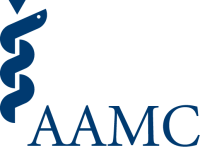AAMC Store
Sign in for the best experience
Physician Education Debt and the Cost to Attend Medical School: 2020 Update
| Year Published: 2020 |
DIGITAL
$0.00
In stock
- Quick Download (will not put the PDF into your My Downloadable Products folder)
- Physician Education Debt and the Cost to Attend Medical School: 2020 Update
This report summarizes the state of education debt for medical school graduates and the attendance costs of medical schools, with a focus on 2019 data.
Physician Education Debt and the Cost to Attend Medical School: 2020 Update
| Year Published: 2020 |

SIGN IN FOR THE BEST EXPERIENCE
DESIGNED FOR
Designed for financial aid staff and advisors; students and potential students; leadership, deans, and CEOs; and other audiences interested in trends in medical student debt, cost, and repayment.
OVERVIEW AND BENEFITS
This report summarizes the state of education debt for medical school graduates and the attendance costs of medical schools, with a focus on 2019 data. Education debt is the sum of both medical school debt and premedical, including college, debt; they are combined because the sum is the amount a medical school graduate must repay. Readers will learn about recent trends across a range of debt and cost topics and how medical school graduates manage their education debt repayment.
Key findings include:
- The median education debt for indebted medical school graduates in 2019 was $200,000, and 73% of graduates reported having education debt.
- The median education debt of indebted graduates has increased, but at a rate only slightly higher than inflation, and has been stable at $200,000 for the past two years. The percentage of medical school graduates with education debt declined from 86% in 2012 to 73% in 2019.
- Race/ethnicity is associated with variations in education debt, which are heavily influenced both by the mix of private versus public schools attended and by how students expected to fund their medical education when they entered medical school.
- Specialty content along with a graduate’s personality and interests, the influence of role models, and the value of work-life balance all have the highest importance in specialty-choice decisions, according to most graduates. Education debt and potential income do not seem to play determining roles in the specialty choice of most graduates. The influence of debt on specialty choice is weaker than 10 other factors, regardless of debt level or family income level. Interest in primary care is consistent across debt levels.
PRODUCT FORMAT
To download this publication as a PDF, either click the download link above or click “add to cart” and complete the checkout process to obtain the download link. A print version of this publication can be purchased through Amazon for a small fee. Any Amazon purchases are subject to Amazon's Terms and Conditions.
TERMS OF SALE
This publication was developed by the AAMC to advance medical education. It is provided to the medical community as a PDF at no cost for that purpose. Purchases from Amazon are subject to Amazon terms, conditions, and pricing.
Please review our Frequently Asked Questions for information about our policies and processes.
The AAMC respects your privacy. Please review our privacy statement, which governs our use of any information you provide to us.
QUESTIONS
If you have questions about the AAMC Store or your purchase, please contact the AAMC Store. Representatives typically respond within one business day.
| Number of Pages: 48 | Year Published: 2020 |
Search

